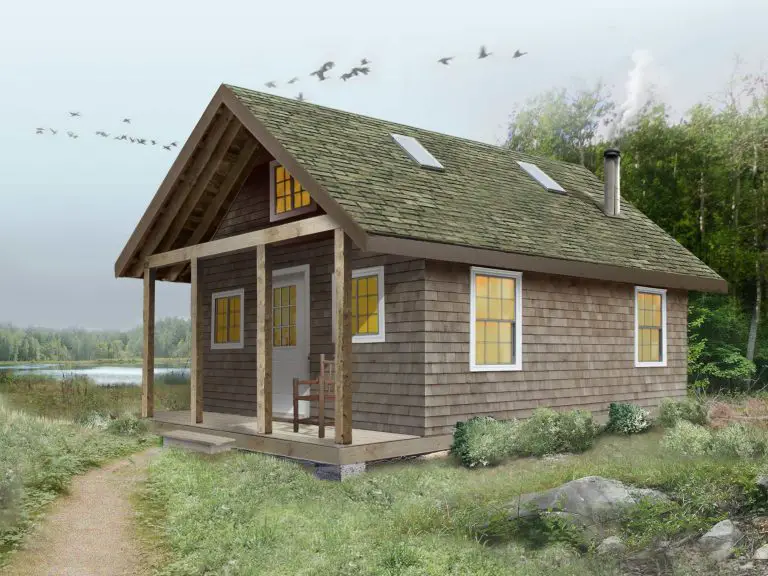UPDATED 23Jul2020: Sharpening a chainsaw properly can take more time and more skill than meets the eye. Electric chainsaw sharpeners make this job much, much easier, but you still have to know how to use the machine. Click below for a detailed video tutorial on how to use a wheel-style saw chain sharpener, then see what that sharp chain can do to a big oak log. There’s a timestamped transcript below the video window so you can review the details as you need to. This video is a 30+ video detailed guide. It goes into all necessary details.
VIDEO TRANSCRIPT: 00:01 In this video, I want to show you how I use a sharpening machine like this to sharpen saw chains. I’m going to go into a lot of detail, and this is an instructional video, so you’ll be able to set up the machine and use it to get great results like I do.
00:17 I’ve sharped saw chains for years with a file and a guide, and the results are good, they’re even great, but they take a long time, and the results aren’t as good as with a machine like this. You can get consistency and sharp edges, and you’ll end up with a saw chain that actually cuts better than new for at least the first little while.
00:37 I’m going to be working on this saw here. The chain has got to come off the saw for this sort of sharpening. I have a couple of chains for each of my saws, and I’ll sharpen both of them, and then when I’m cutting I will take the dull one off and put the fresh one on. That way, I have to set up the machine as little as possible, so it’s very efficient.
01:02 But before I take the saw chain off, I want to check something. See, if you look closely here, this is a cutter. Right here, this actually chewed some of the wood, and this is a cutter too, this other one, but between, there’s this other little thing here. It limits the amount of bite that each chain tooth can take. If the chain tried to take its full bite right down to the depth, it just wouldn’t be able to do it. The chain would stick in the wood. So there’s this thing here and it rides in front of the cutter, and it stops the cutter from bitter off more than it can chew. This gauge here is how you measure whether this is sticking up too much. I say too much because as you sharpen a saw chain, the effective edge, the cutting edge, actually starts to go down a little bit. That’s because the tooth, the chain tooth is sloped backwards, so the more you sharpen it, the further down it goes, and the higher this little nub in here gets in relation to the cutting edges.
02:18 This gauge here rests over the cutters. It sits on top of these cutters, and it’s got a depressed center section. It’s depressed 25-1000ths of an inch, and so if this relationship between the cutters and this little limiting nub in here is correct, when I put the gauge on, I won’t be able to feel the nubbin sticking up above the side of the gauge. If it is sticking up, then I can file that down by hand with a flat file, or I can use the sharpening machine for that too. It’s faster and more consistent. I’ll show you how all that works when we get the saw chain off and put it onto the machine.
03:10 Taking off a chain is the same for any kind of saw. You’re going to need some kind of a socket wrench to loosen off the two anchor nuts. There’s always two of them on these things. Just to make the job easier, I like to loosen the chain tension a bit too. So take these nuts and come right off. Then this cover here can come off and it gets quite dirty in there. I’ll show you a little bit about cleaning that out later. Now we just push the bar in and we can lift the chain off. I like to take it off the nose of the saw bar first, just to get it off there. Then come back here, and then wiggle it around and out, and get it off there.
04:17 Now before I do anything else, I’m gonna take the bar off. I’m gonna clean this and then I’m gonna flip the bar over ’cause bars get worn as the chain slides on them. Most cuts are done on the bottom side of the bar, so that’s where the wear is greatest. But if you flip it over, you’re gonna get the most wear out of your bar and the wear you’re concerned about causes these surfaces here to become dished. So the very sides of the bar, a thin section of metal will stick up, and the more the bar wears, the higher that little ridge of metal gets. It kind of makes the chain slide wonky and eventually it’s a big problem.
05:06 What I do actually, as soon as I feel any kind of ridge forming on these edges, I just take the bar over to my woodworking edge sander and I just give ’em just a quick little cleanup sanding along the whole length of it. It completely gets rid of any issues like that, so it’s fast and simple, and the bar stays in excellent condition.
05:28 So, I will install it this way around when the time comes, but for now, let’s just put the saw chain, bring it over to the machine here, and I’ll show you how the chain fits in. You have to think of these machines like a miniature chop saw except it spins a grinding wheel like this. There are different widths of grinding wheels for different sizes of chains, but this is what they look like. The last quite a while. Eventually they get too small to use, but that’s what they look and that’s what’s in here. And so with the chain held in this little clamping device, like so; clamped in there and with the motor running, you kind of chop down and the grinding wheel grinds the leading edge of the tooth.
06:29 That’s the theory. That’s how it works and it works really well and quickly, but you’ve got to setup the machine properly. You’ve got to make some pretty precise adjustments for how far the grinding wheel chops down, how much of the tooth is going into the grinding wheel, and also there are different angle settings here. This sounds more complicated than it is, but you do need to get all these right in order for this machine to work. That’s kind of what takes the time, and once it’s all setup, you’re ready to go.
07:06 So, with the device angled this way, I can sharpen every second tooth. So I can sharpen this one, I can sharpen this one, I can sharpen this one. I’m gonna show you how the action works without turning it on. I put this chain in here, I pull it back till this cog here stops it from going any further. That regulates the position of the cutter in relation to the restaurant of the machine. And then, I just lock it down with this little clamp here. So now the chain is firmly supported, it doesn’t wiggle, it doesn’t move, nothing. I’m gonna chop down here and I’m going to grind … It’s the leading edge of the tooth that I’m concerned about. I’m not concerned for anything down here. It’s this leading edge of the tooth here and especially the point. That’s were most of the cutting happens, is this point. When the machine is adjusted properly, it’s gonna produce a chain that actually produces ribbons of wood, not just saw dust. That’s why this is so good.
08:18 Now I’m gonna show you how to make the necessary adjustments. If you’ve had any experience at all sharpening chains, you know that the main issue is the relative angle of the cutters compared with the thing that’s sharpening them. So, we’ve go two angles going here. We’ve got this angle here, and then we’ve also got a kind of a tipping down angle. You can see both of these on the front. So when I loosen this part of the machine, there’s a knob under here, now I’m free to do two things. I’m free to swivel this around. See, now as you can see, that would of course be no good, right. I need to match the angle of the cutter there. So, I can swivel this around in different angles this way and I can also swivel it in this plane too. So it goes this way and it rotates this way. So I have to get those angles right.
09:24 What I like to do is to take a fairly fresh chain that’s maybe a little bit dull and sharpen it perhaps a little bit sooner than I normally would, and I follow the angles of the cutter. I let that be my guide. I happen to know that this chain has a horizontal angle of smidge more than 30 degrees, so that number right there. You can see the mark it lines up a little bit past 30. I also know that when we’re sharpening this chain, these teeth here, we want things to tip back by 10 degrees. Now if you notice here, you can see how it slides, how this thing slides. It rolls, I guess you could say, like this. So we want a little more than 30 in this direction and we want to have this positioned over here for these teeth that I’m doing on the side.
10:37 So when I have that in place, I can do up the knob and lock everything into position. Now, have I got this right? Well, we need to take a look and see. How does that line up? I think it looks pretty good there. There is a big problem though and that’s that the tooth is nowhere near far enough in that direction in order to encounter the wheel. Now, can you see that gap there? That’s no good because we want the leading edge of the cutter to encounter the grinding wheel. So, we’re gonna loosen this off and I’m gonna use this adjustment mechanism over here. This is the thing that allows me to cause the chain to move forward a little bit, so I’m gonna try that. I’ve moved it forward a bit with this knob. This pushes the cutter forward. I’m gonna pull it back against the dog here and clamp it in.
11:43 Let’s see what it looks like. Okay, now that’s probably … that’s too much. I’ve overdone it. I’m gonna be grinding away more tooth than I need to. You see at this stage, what you want to do is you want to look at the leading edge of the tooth and any damage that be there. The damage is going to be fairly consistent. Damage from hitting a rock or a nail in some wood or even just regular wear and tear. The damage and the wear is going to extend pretty much the same along all the teeth. So I want to remove just enough tooth to get rid of the damage and then no more. So I’ve got this adjusted to take off too much, so I’m gonna draw this back a little bit, pull it back, and let’s give it another try. So that’s probably pretty good. I think it’s just encountering the leading edge of this tooth.
12:41 Now it’s time to actually turn the thing on, and to give it a try, and to see how we’re grinding this tooth, and whether it looks good or not. We’re gonna make our adjustments here, and then we’re just going to run through all the teeth on this side, using that one consistent adjustment.
12:57 So with all these teeth here, I want to make sure I know at which tooth I start so that I don’t over sharpen, I don’t go over some previously sharpened teeth. So I just use a marker to turn one of them black. Now I’m gonna turn the things on here. I’m gonna turn on the motor. It’s important that this stone be clean, be not glazed. After sharpening, maybe half a big chain like this or certainly a full big chain, there’s going to be kind of glazing of metal that builds up on the grinding wheel. That’s goon stop that wheel from aggressively and cleanly grinding the steel of the cutting teeth. So what you have to do is, you have to dress the wheel every so often, and this is a very hard wheel dressing block. It removes, it kind of grinds away the grinding stone essentially. It cleans it up. I want to make sure I always produce a rounding edge because that’s the profile I want to get into the tooth.
14:10 So, I’m gonna switch on now, and I’m just gonna dress the wheel, so that wheel’s nice and clean. I know it’s going to cut well, but I don’t know if the adjustments are perfect yet. So, I’m just gonna gingerly try this one tooth and let’s see what happens here. That’s just about perfect. We’re moving some material from front of the tooth, but not too much. I’m also not sitting here for a long period of time with the grinding wheel in contact with tooth because I don’t want the tooth to get red hot or anything like that. It can get warm, and it will get warm, but I just want to grind it like in pulses like that. Now, I like that.
15:12 That’s actually looking great and we can take a closer look at that, but there’s one other adjustment that I want to tell you about. So I’ve adjusted for angle, the two angles. The angle this way and then the sideways angle, that you can see on the scale. I’ve adjusted the position of the tooth relative to the grinding wheel, so forwards and backwards. That’s regulated by this device here.
15:39 But there’s one other adjustment and it’s up on top here. It’s this knob and this controls how far down the wheel chops. If I go too far down, I’m gonna start grinding part of the chain that I don’t want to grind. I only want to grind the tooth and no more. So the depth of cut has to be regulated as well.Now as it turns out, the depth of cut’s pretty good here. It’s just about where I want it. It goes down, it’s contacting everything on the tooth, but it’s not going too far. So I would consider this to be kind of the ideal tooth grind.
16:17 You can see it from that side. Let’s come around from the other side and you can learn a lot by looking at it from the operator side as well. Do you see how this part of the tooth is shiny? It’s freshly ground. It’s freshly ground right down to the bottom, and that fresh grind, it circles around and comes up here to a nice point. That is a nicely sharpened tooth. In fact, it’s so sharp, I could easily cut myself on a point. It’s very sharp and that’s what I want for all the other teeth on that side of the chain. So my machine is setup, I’m ready to start using it in an automated way and I want to show you the rhythm of what that looks like as I get going.
17:09 So I’ve got my safety glasses on and I’m ready to start using this adjustment. So this is the tooth I’ve already done. Even when a tooth is already done, you can always get a few more sparks out of if you kind of lean on the machine, on the handle one way or the other. There’s just some flexing in the machine. It’s not a big deal. You don’t keep grinding until there’s no more sparks, you just keep grinding until most of them are over. So, grind, loosen, forward, pull back, clamp, and grind again. So I’ll just continue on here. This is what the rhythm looks like when I don’t stop to explain how it works.
19:12 I’m pulsing this, I’m not constantly laying on it for more than a second or two because I don’t want to overheat the cutter, but if there’s any bark or resin or anything on these cutters, they’re gonna get smokin’ hot. It’s not like you can keep it perfectly cool, but you certainly can minimize the buildup and that’s what I like to do so. This is an exceptionally long chain to [inaudible 00:19:41]. It’s a bit longer than I need for the logs I’m cutting, but the longer the chain, the longer it stays sharp, all things considered, all things being equal. Just ’cause there are more teeth to carry on the cutting. So I get longer chain life and I have more teeth to sharpen when it comes time to sharpen the longer chain, but with a machine like this, it’s not really an issue. See we’re back here to our magic markered tooth, so you just saw what it took to sharpen half of this great big long chain.
20:22 Now, I need to adjust the sharpener to change its angle to sharpen all the teeth on the other side of the chain, so I’m kind of half done. What I like to do though, is I have multiple chains for each of my saws and I dull them all before I get out the sharpening equipment, and so I don’t have to keep changing these angles back and forth. Normally I would just take this chain off and I would put another dull chain on, and I would sharpen that same side of the dull chain, and then I would make the adjustment, sharpen the other side, and then put the first chain back on. So I’m minimizing the adjustments I need to make here, but that’s the idea.
21:02 So now let’s reconfigure this sharpener to go at the other side of the chain. My job now is to reverse all of the adjustments on this carriage here. So, I’m going to loosen off the knob and it was 30 degrees on one side, now I’m gonna swivel it over and make it a little bit past 30 degrees on the other side. Now, the whole chain carriage is sloped 10 degrees this way. I need to reverse that as well, so that should … here we go. So the reason for all this is to adjust the angles so that I can start doing every other cutter now. So this one’s sharp but of course this one and all the cutters on this side are not sharp. So I’m gonna line everything up, tighten it up, and then take a look and see how well this is coming down. Now, I can see … Nope, I don’t have it adjusted here. There we go.
22:16 There’s a problem, it’s not a problem, it’s just something you have to be aware of. You see, before when this carriage was flipped over this way with this dog engaging the back of the cutters I already cut, the position of it from side to side was fine, but you see there’s a problem there now. First of all the dog is hardly catching this tooth on this side of the chain, and if I were to chop down, if you can see in there, I would be grinding that stop dog there. So they’ve solved this problem by making the dog, allowing it to be able to move from side to side.
22:58 So I’m going to be loosening this knob. I’m not changing the position of the dog relative to anything else, but all it’s allowing to happen is for the dog to slide sideways. If you see here, there’s this little spring in here, that’s to make sure that the dog slides over when you loosen this knob. I’m putting it into the position for the other cutters and now I’ll lock it in place here. Now I’m not gonna turn it on. I’m just going to how are we doing. Well, it’s just about perfect. We’re just encountering the leading edge of the tooth. If you see, the angle is perfect. The angle of the grinding wheel matches the angle of the cutter perfectly and it’s just gonna rub up against the front side. Yeah, that’s pretty perfect.
23:51 Sometimes I have to fool around with it, but theoretically, the depth of chop and the degree of forward and backwardness of the cutter, should be same from one side to the other. I shouldn’t have to make extra adjustment, but in this case I didn’t. I’m ready to go now. I’m gonna put on my safety glasses. Now, while we’re at it, before I switch on, you see this stone, this grinding wheel is still pretty clean, but if you look at places like that, for instance, it’s starting to get dark and glazed over. So just so this wheel cuts aggressively and cleaning and as coolly as possible, I’m gonna dress that again once I fire it up.
25:14 So I’ve just finished all the teeth on this chain. It’s a long chain and I would be ready to put this back on the saw right now, but I want to cut the depth guides down a little bit so that this chain can take a bigger bite. It doesn’t really need it, but as I’ve explained before, these little bumps here limit the bite that each tooth can take. This is going on a big, powerful saw. It can take a bigger bite than it’s going to now. So I’m just gonna reconfigure this grinder to make that happen.
25:49 So adjusting the depth guide, the depth gauge, this isn’t something that you have to do all the time, maybe only two or three times in the course of the life of a chain before all the cutters are ground off, but I’ve reconfigured this sharpening machine to do that. So come and take a look. I’ve changed the angle of this so it’s coming, more or less, straight down. It’s a little bit off from perpendicular. It doesn’t really matter because my aim right now is to grind off the top of this depth guide a little bit with the grinding wheel. So I just want to make it shorter. It doesn’t have to be sharp and it doesn’t have to be angled in a certain direction. I can take this wheel off and I can put on a wider wheel, something like this that would make the job a little bit easier, but I don’t want to invest the time in taking the wheel off and replacing it again for such a job.
26:46 So what I’ve done is I’ve adjusted this stop dog so that the depth gauge is immediately under the wheel when it comes down. Okay, now I’ve adjusted the depth knob on the back of the machine so that it only goes down the amount I want; and the amount I want, if you recall, is determined by this gauge. This gauge sets the depth gauges down 25-1000ths of an inch below the tips of the cutters. That’s a kind of a factory setting. Sometimes I’d like to take it a little lower than that, as I said, but let’s just see how this looks. I’m testing the adjustment here, so we’ll just clamp in into place with that on top. And yeah, I can’t feel that sticking up, it’s pretty much flush, pretty much flush with the gauge.
27:46 So, I’ll show you how this works. I’m just doing it on the one side because the depth guide here is in a little bit different position, so I will adjust the tool to do these properly later. But for now, I’ll just do a couple of these and show you what they look like. Okay, so that’s it. Now, just before I move it onto the next one though, I’m gonna take this [rotch 00:28:29] file. Because these depth guides, they’re actually encountering the wood as they fly to long. I want to round this a bit and it just takes a couple of … and then that’s sufficiently rounded. So, I’ll just move onto the next one here … then file.
29:30 So the chains all sharp, the cutting edges are ready to go, and I want to put the chain back on the saw. This is the housing that holds the chain on and it gets really dirty, so you should clean it a bit before you put it back on. You don’t have to be really surgical about it. You just sort of want to scrape out the dirt from this band here. That’s chain brake, that’s the thing that will grip the outside of the clutch if the chainsaw kicks back in my arm, triggers this mechanism. You can clean out some of the other areas too. The thing is, it’s gonna get very dirty, very quickly, so don’t get to obsessive about knocking out a bunch of stuff, just the loose stuff. And also in here, ’cause this is where the nuts seat down so you want them to seat against something solid and not just a bunch of oily sawdust.
30:40 So, gonna put the bar back on which fits over these two studs, I’m gonna push it all the way in, and then take my chain and fit it in around the clutch. I want to make sure it’s properly engaged with the clutch housing and then just get in and get it around. That seems to be right. Sometimes the chains cannot properly engage with the clutch, so they’re not actually where they’re suppose to be. If that’s the case, you won’t be able to turn it over very easy like this, so it looks good. I’m always a little leery though because it is possible for these things to go together improperly. So, I’m putting this on.
31:42 Now that happened fit on quite nicely. But if doesn’t go on and for some reason, it doesn’t seem to want to go all the way in, it’s probably because your chain adjuster, which has a little finger inside, is in the wrong position. Maybe you’ve taken off another chain and you’re replacing it with a chain that’s tighter, and so this finger here, you see, this moves back and forth as you tighten or loosen the chain and it engages with these holes here. So if this pin is in the wrong position, it’s not gonna go in the hole and this will go partly on, but not on as far as it should. So that feels like it’s on as far as it should, it should be. Now I say, feels like, because sometimes as I said, these things can go together improperly; so you don’t want to just torque everything up, and fire up the engine, and go and start cutting without doing some testing.
32:40 So the first part of the testing is to snug this up, not really tight, but just tight enough to hold things. Now you see here on the chain, we’ve got a lot of slack. The chain should be tight enough that there’s no gap there, so that’s where the chain adjuster comes in. On this Echo saw it’s nice and handy on the outside, so I’m just tightening it. As I tighten it, you’ll see that that slack starts to go away. I just stop a smidge past closed gap situation. Now, yeah, that chain still rotates. It still slides along. I’m in good shape. I know I can finish tightening up these nuts here now, and this saw should be ready to go.
33:44 When I fire it up, I’m going to make sure that the chain does rotate freely. Even though this is not a new chain, I know from experience that in the first half dozen cuts or so, it’s entirely likely that extra slack will develop. So I’m gonna need to loosen these nuts off, give it a little more chain tension, do the nuts back up again, and then I should be okay for awhile as far as chain tension goes.












